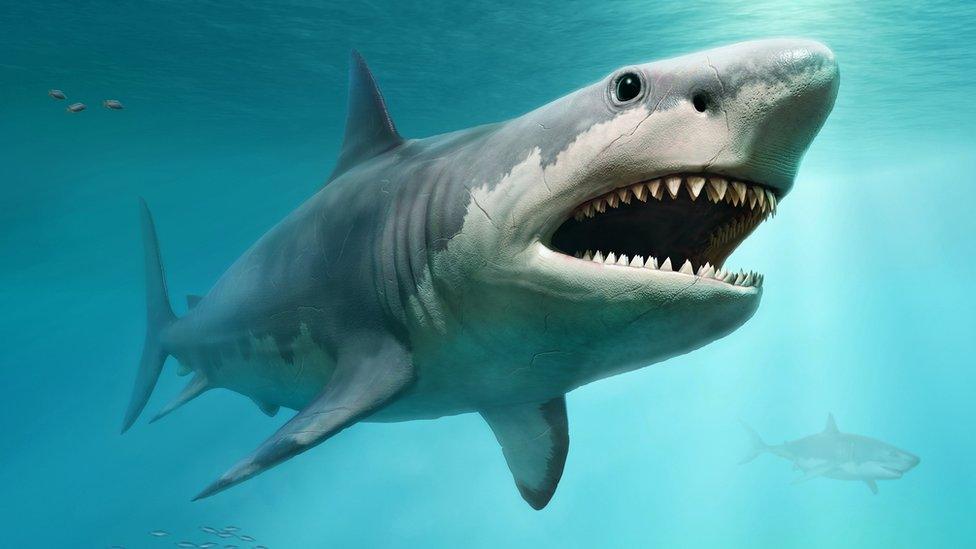Scientists accidentally discover prehistoric shark with vampire-like teeth
- Published
- comments
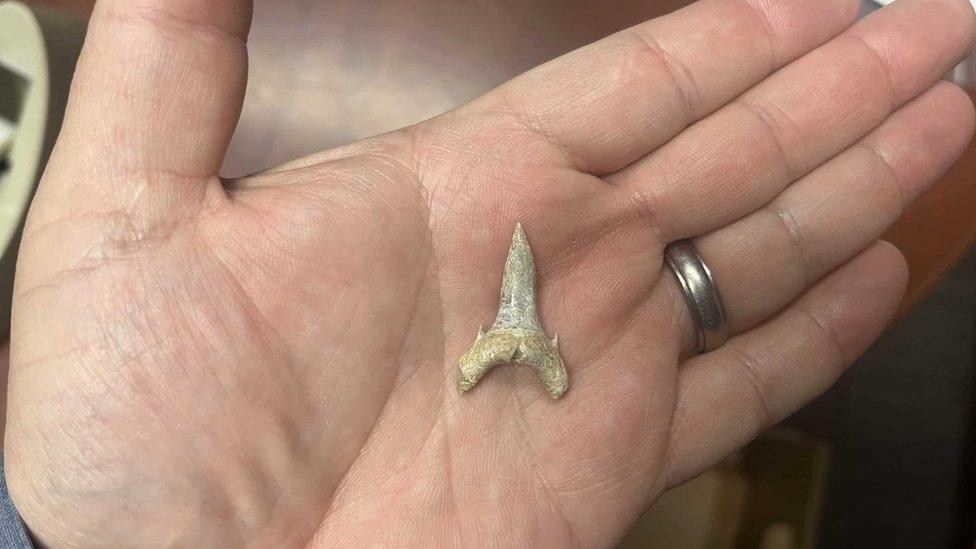
This shark's tooth has tiny needle-like spikes either side of the main tooth which looks like little vampire teeth
Sharks' teeth are scary enough as they are, but can you imagine them with needle-like fangs too?
Scientists have accidentally discovered what they believe to be a new prehistoric shark species in Alabama.
Palaeohypotodus bizzocoi is thought to have been one of the ocean's top predators from approximately 65 million years ago, just after the dinosaurs were wiped out by an asteroid.
Researchers realised it was a new species of shark thanks to its unique teeth.
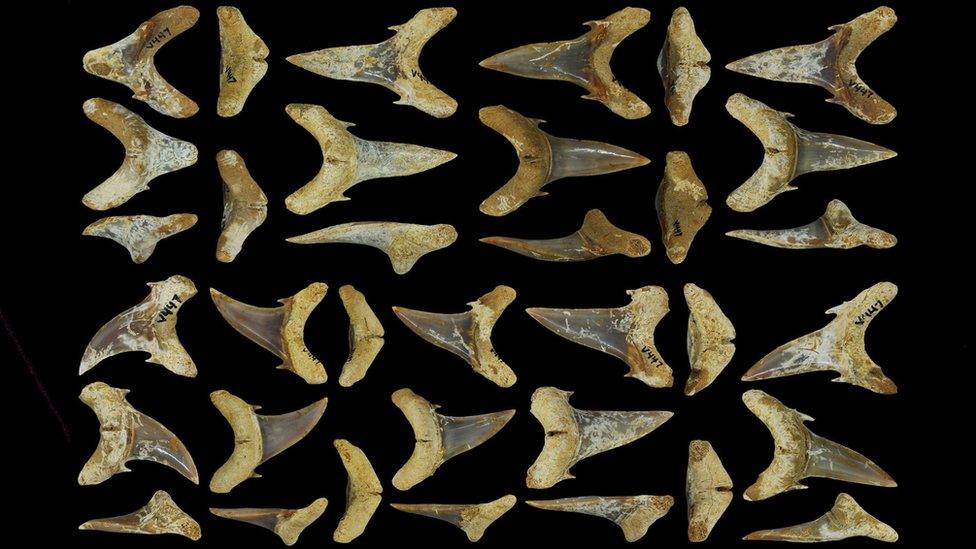
The teeth were first found over 100 years ago but were only rediscovered in 2020
How do you accidentally find a new prehistoric shark species?
Jun Ebersole, the Director of Collections at McWane Science Center said: "A few years ago, I was looking through the historical fossil collections at the Geological Survey in Alabama and came across a small box of sharks' teeth that were collected over 100 years ago in Wilcox County.
"Having documented hundreds of fossil fish species over the last decade, I found it puzzling that these teeth were from a shark that I didn't recognise."
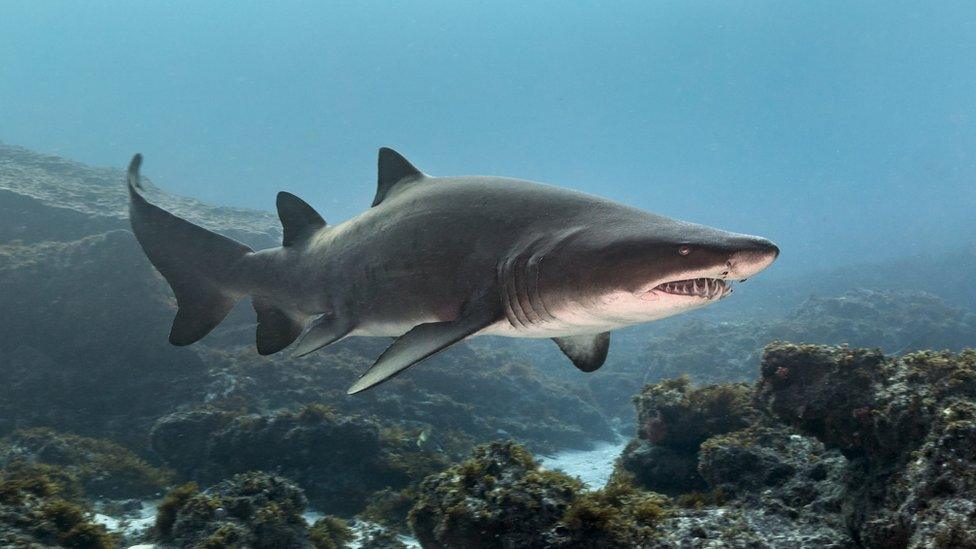
Scientists say the prehistoric shark might have resembled the modern sand tiger shark
The teeth were collected 100 years ago from a farm in Wilcox County and were then rediscovered in 2020.
Scientists aren't sure what the species might have looked like because they are only working from these unique teeth.
The teeth are most similar to those of modern-day sand tiger sharks, so researchers believe the creature could have measured up to 10 feet (about three metres) long.
- Published22 June 2023
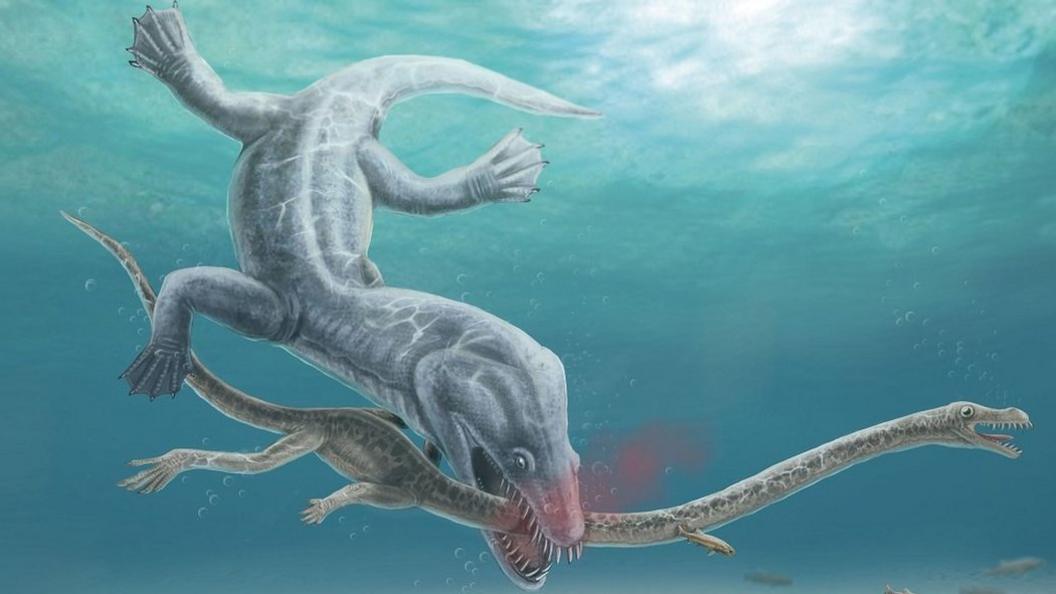
- Published26 February 2023
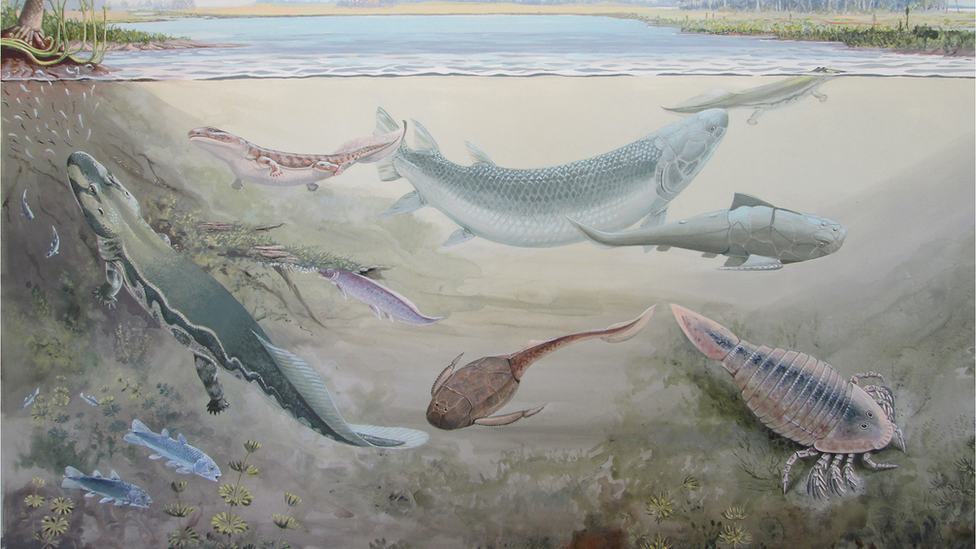
- Published2 July 2023
